Key Takeaways
1. Music as the Pulse of Black Experience
The soundtrack to grief isn’t always as dark as the grief itself. Sometimes what we need is something to make the grief seem small, even when you know it’s a lie.
Emotional Resonance. Hanif Abdurraqib masterfully uses music as a profound lens to explore the complex emotional landscape of black life in America. He delves into how artists like Chance The Rapper offer a "bandage over anything that hurts," providing moments of collective joy and optimism even amidst profound societal grief. This isn't about ignoring pain, but about finding necessary, albeit temporary, relief.
Cultural Archiving. Music serves as a vital archive of black experience, capturing nuances that often escape mainstream narratives. Abdurraqib highlights how artists, particularly those rooted in black church music and oral traditions, articulate the triumphs and failures of their communities for a world that may not otherwise understand. This act of storytelling through song becomes a form of freedom, controlling the language of one's time and people.
Shared Connection. Beyond individual expression, music fosters deep communal bonds, allowing listeners to feel less alone in their experiences. Whether it's the collective hum in a black church or the shared understanding at a concert, music creates a space where "all of us are People Like Us," connecting individuals through shared feelings of fear, heartbreak, ecstasy, and mourning. It's a powerful reminder that even in isolation, there's a collective pulse.
2. The Constant Policing of Blackness
And I do imagine that it must be something, to be able to decide at what volume, tone, and tenor you will allow black people to enter your life, for praise or for scolding.
Controlled Narratives. America often dictates how black people are perceived and allowed to express themselves, particularly in public spaces. This policing extends from the "class" critiques leveled at black athletes like Deion Sanders and Marshawn Lynch to the expectation of "humility" from Serena Williams, effectively demanding that black individuals "silence the very things that drive her." It's a constant negotiation of identity under a scrutinizing gaze.
Everyday Microaggressions. The author illustrates this policing through personal anecdotes, such as being asked about his "interesting name" or being questioned about living in his own apartment. These seemingly small interactions reveal a deeper, systemic discomfort with black presence and self-definition, where blackness is often "most appealing when there is a type of suffering attached to it—sadness, anger, struggle, dressed up and packaged to the masses."
Systemic Injustice. The policing of blackness culminates in more overt forms of violence, from police stops that escalate into fear to the tragic deaths of unarmed black individuals. Abdurraqib highlights how figures like Allen Iverson were "saddled with" the label of "thug" for not conforming to white expectations, contrasting with Michael Jordan's "respectable" image. This constant scrutiny underscores the precariousness of black existence and the ever-present threat of being deemed "out of place."
3. Grief as a Generational Inheritance
I don’t remember when my friends and I stopped asking the question of “why?” around death.
Normalization of Loss. The pervasive nature of death within black communities, particularly unexpected and violent death, leads to a chilling normalization of grief. The author recounts attending multiple funerals in quick succession, where the question of "why?" eventually gives way to a grim acceptance, a "sadness in that, but there’s also an urgency." This constant proximity to loss shapes a unique relationship with mortality.
Unspoken Burden. Grief is often carried silently, a heavy weight passed down through generations, particularly among black women. The author reflects on his grandmother's constant smoking as a coping mechanism, a "swear, I’m gonna die one of these days" that speaks to a lifetime of enduring relentless tragedy. This unspoken knowledge of what these women "gave" highlights the profound, often invisible, cost of survival.
Collective Trauma. The book connects personal grief to larger historical traumas, such as the 16th Street Baptist Church bombing and the death of Sandra Bland. These events are not isolated incidents but part of an ongoing "history of instilling fear in Black people in this country," where the "all-too-familiar death" becomes a shared experience. This collective trauma demands a continuous process of mourning and remembrance, even as the world moves on.
4. The Search for Sanctuary and Belonging
To watch the casual packaging of a violence that impacts and affects bodies that look like yours, and to watch that violence knowing that you have no place in it, other than to take it in, feels similar to being black every other place in America.
Exclusion in Mainstream Spaces. The author recounts feeling like an outsider in predominantly white spaces, such as punk rock shows, where the "brotherhood" often excluded people of color, women, and the queer community. This experience of being "tokenized, or being invisible" highlights the constant struggle to find genuine belonging in environments not built for diverse identities. It underscores the need for self-created havens.
Creating Self-Made Havens. In response to this exclusion, black individuals and communities actively forge their own spaces of comfort and affirmation. Events like Afropunk are celebrated as "black escape from what the actions of white escape breeds," offering a place where the "dreamt-of ethos of punk is there." These sanctuaries, whether physical or cultural, provide vital refuge and a sense of shared identity.
The Complexities of "Home." The concept of "home" is explored with nuance, recognizing that while it's "where the heart begins," it's not always where it stays. The author reflects on the longing for escape from his childhood neighborhood while also acknowledging the deep cultural roots gained there. This tension between leaving and staying, and the desire to honor one's origins, defines the ongoing search for a place where one truly belongs.
5. Art as a Weapon and a Balm
I’m less in favor of anything that hurts and then becomes theater, if that theater isn’t also working to heal the person experiencing pain.
Transforming Trauma. Abdurraqib explores how artists channel personal and collective pain into their work, using their craft as a means of processing trauma. Future's prolific output after a public breakup, for instance, is seen as a "desire to bury himself," transforming heartbreak into "codeine-fueled brilliance." This artistic alchemy allows for a public reckoning with private suffering.
Healing and Confrontation. Art serves a dual purpose: it can offer solace and healing, but also act as a powerful tool for confrontation. My Chemical Romance's "The Black Parade" is presented as an album that "reckons with the idea that a departure is most difficult because of who we leave behind," forcing listeners to confront the raw reality of death. This unflinching honesty, even when painful, can be a catalyst for understanding.
The Cost of Creation. The book acknowledges the immense personal cost of creating art from deep emotional wells. The physical and mental toll on artists like My Chemical Romance, who "pushed so deep into the imagination of death that it becomes you," highlights the sacrifices made in the pursuit of daring artistic visions. This commitment, while yielding spectacular results, often leaves artists "proud and defeated."
6. The Performance of Authenticity and Myth
I do not know what it is that makes a person real, but I imagine it is in the way they can convince you of the things they have not done.
Constructed Realities. The author dissects the concept of "authenticity" in popular culture, particularly in rap and wrestling, revealing how personas are often carefully constructed. Figures like Ric Flair, who "walked from a plane crash reinvented," and Johnny Cash, who "never spent any real time in prison," built their legacies on compelling myths that blurred the lines between lived experience and performance. This ability to "convince you of the things they have not done" is a powerful form of artistry.
The "Realness" Debate in Rap. Rap music, with its insistence on "realness," faces unique challenges when artists like Migos, who are "nice kids from the suburbs," rap about "trap shit." This sparks debates about who is "allowed to talk about certain types of things," highlighting the policing of black identity and experience within the genre itself. The audience's desire for a "dangerous fantasy" often overshadows the actual lives of the artists.
The White Rapper's Dilemma. The "white rapper joke" is explored through figures like Eminem and Macklemore, who navigate the complexities of profiting from a black art form. Eminem's "reckless shit" offered a "danger with no repercussions" for white audiences, while Macklemore grappled with the "overwhelming feeling of his whiteness and analyzing each corner of guilt." This dynamic reveals how white artists often "cannibalize whiteness" to gain credibility, sometimes at the expense of their black peers.
7. Resilience Through Collective Defiance
The way a good preacher might say “We” in a black church and the congregation hums. The way I say “My people” and My People know who they are even if we’ve never met, or even if we’ve never spoken, or even if all we have is the shared lineage of coming from a people who came from a people who came from a people who didn’t intend to come here but built the here once they arrived.
Shared Lineage and Identity. Abdurraqib emphasizes the profound sense of collective identity and shared history that binds black people, even strangers. This "shared lineage" creates an immediate understanding and connection, a recognition that transcends individual experiences. It's a powerful affirmation of belonging in a world that often seeks to isolate.
Joy as Rebellion. In the face of relentless adversity, black joy becomes a radical act of defiance. The author celebrates "expressions of unbridled black joy" because he understands "what it takes to unlock this, to have the joy of the body drown out the anxiety of the mind." Whether through music, dance, or simple greetings, these moments of collective happiness are vital acts of survival and resistance.
Community as Strength. The black community, from churches to protests, serves as a continuous source of strength and mutual support. Kendrick Lamar's "Alright" is highlighted as a "rallying cry and a salve," pulling people on the front lines of movements to a place of healing. This collective spirit, rooted in a shared understanding of struggle and a commitment to "hold back the darkness," fosters an unbreakable resilience.
8. The Unyielding Weight of American History
There is pretty much no violence in this country that can be divorced from this country’s history.
Historical Echoes. The book powerfully demonstrates how past violences are not isolated events but continuous threads woven into the fabric of American history. From the legacy of slavery and lynching (Ida B. Wells, Sandra Bland) to the burning of black churches, these historical traumas continue to manifest in contemporary injustices. This deep historical context reveals that "there is no safety from this" ongoing sickness.
Selective Memory and Erasure. America often engages in a selective memory, glorifying certain narratives while erasing others. The author notes how black women's contributions are frequently reduced or stolen, and how movements are "repackaged with faces America finds more palatable." This constant battle against historical erasure underscores the urgency for black people to "hold on to our stories, or tell them for ourselves."
The Cost of "Progress." Even in moments of perceived progress, such as the Obama presidency, the underlying machinery of American violence persists. The author reflects on how the "new and violent empire" continues to build upon "a legacy of violent empires before it," demonstrating that true change requires more than symbolic gestures. The weight of this history demands a continuous reckoning, not just a celebration of fleeting advancements.
9. Finding a New Optimism in Honesty
I’m not sold on pessimism as the new optimism. I need something that allows us to hope for something greater while confronting the mess of whatever all this blind hopefulness has driven us to.
Beyond Blind Hope. Abdurraqib advocates for an optimism rooted in honesty, a clear-eyed confrontation with the harsh realities of the world rather than a naive belief that "everything is going to be all right." He challenges the idea that "endless hope" is beneficial in a country that "never runs out of ways to drain you of it," urging readers to acknowledge the "bad bet staring back" in the mirror.
The Value of Staying. Despite the pervasive sadness and the constant temptation to "give up on," the author emphasizes the profound importance of choosing to stay and fight. He describes grief as a "great tug-of-war," where even if one is "on your knees," holding onto the rope is an act of defiance. This commitment to presence, to "looking for a way out, every time," is a hard-won form of optimism.
Small, Hard-Won Joys. In a world that often feels overwhelming, the search for "something small and hopeful within" becomes paramount. Whether it's the collective thrill at a concert, the warmth of a shared laugh, or the simple act of connecting with loved ones, these moments are not distractions but essential acts of survival. This new optimism is not about grand solutions, but about cherishing the fleeting, precious reasons to live and fight for "generations and generations and generations."
Last updated:
Review Summary
They Can't Kill Us Until They Kill Us is a highly acclaimed essay collection exploring music, race, and life in America. Readers praise Abdurraqib's lyrical writing, insightful cultural commentary, and ability to connect personal experiences with broader social issues. The essays blend pop culture analysis with reflections on identity, grief, and social justice. Many reviewers describe the book as emotionally powerful and perspective-changing. While some found certain essays less engaging, most consider it a must-read work that brilliantly examines the intersection of music and the Black experience in America.
Similar Books
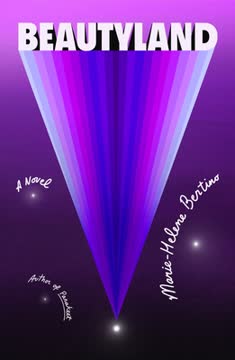
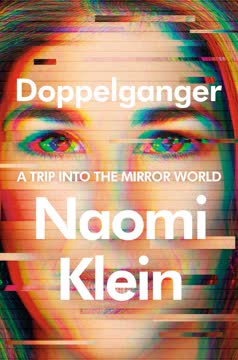

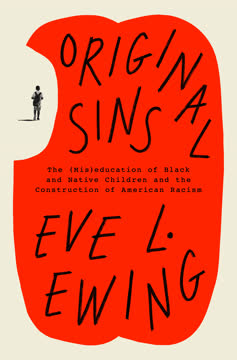
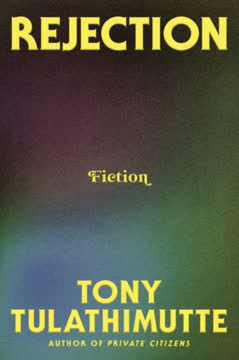
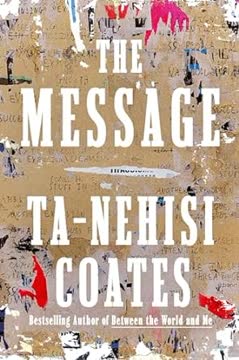
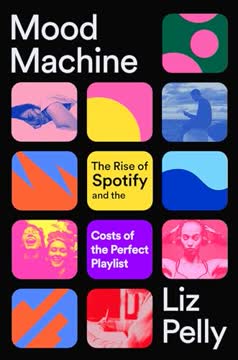
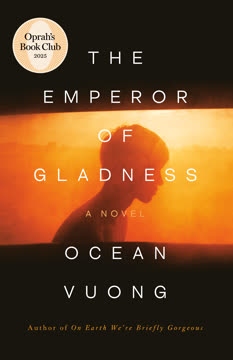
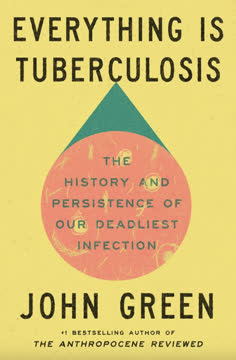
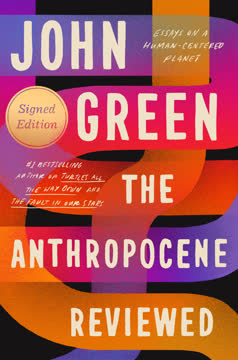
Download PDF
Download EPUB
.epub digital book format is ideal for reading ebooks on phones, tablets, and e-readers.





